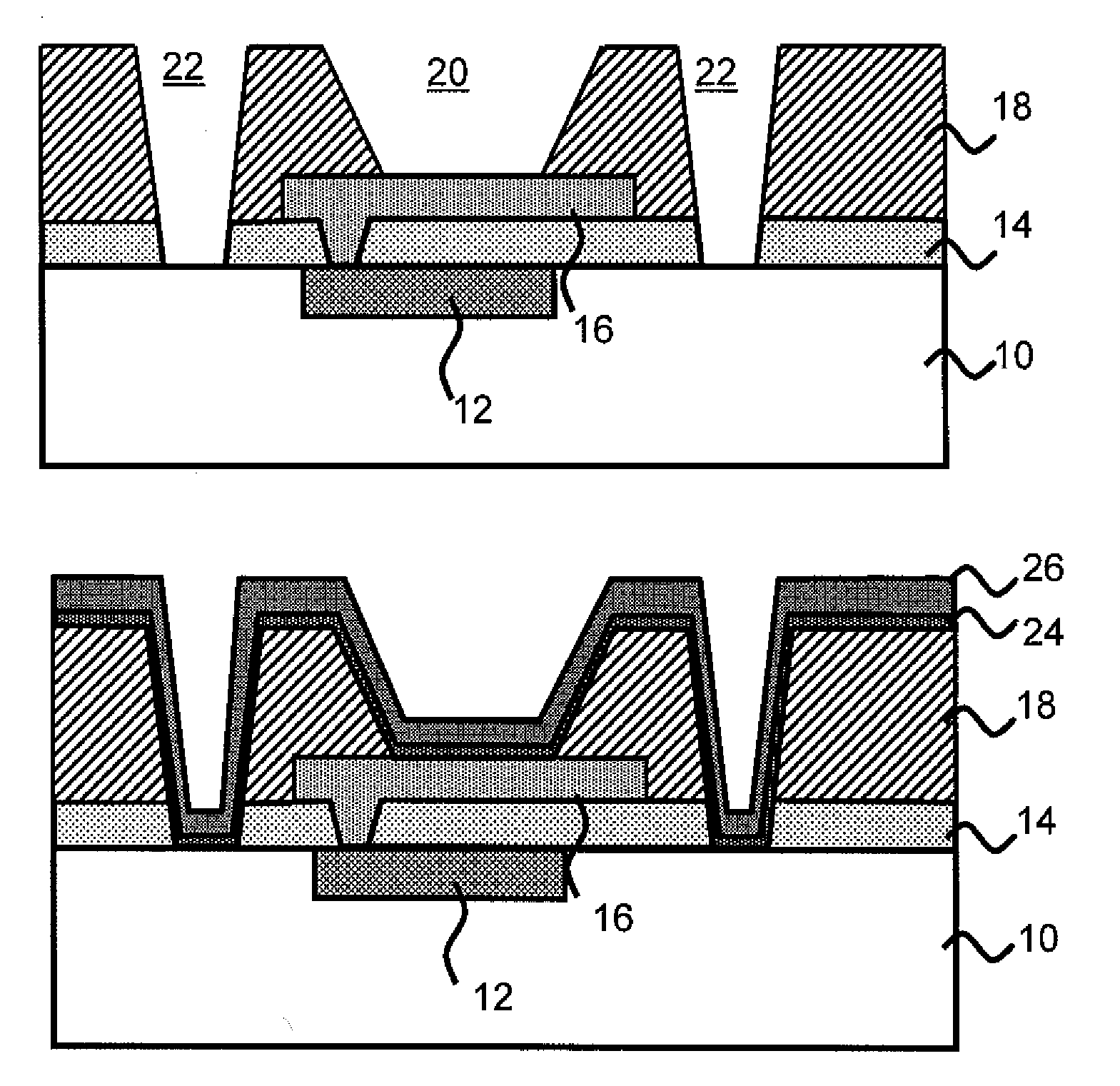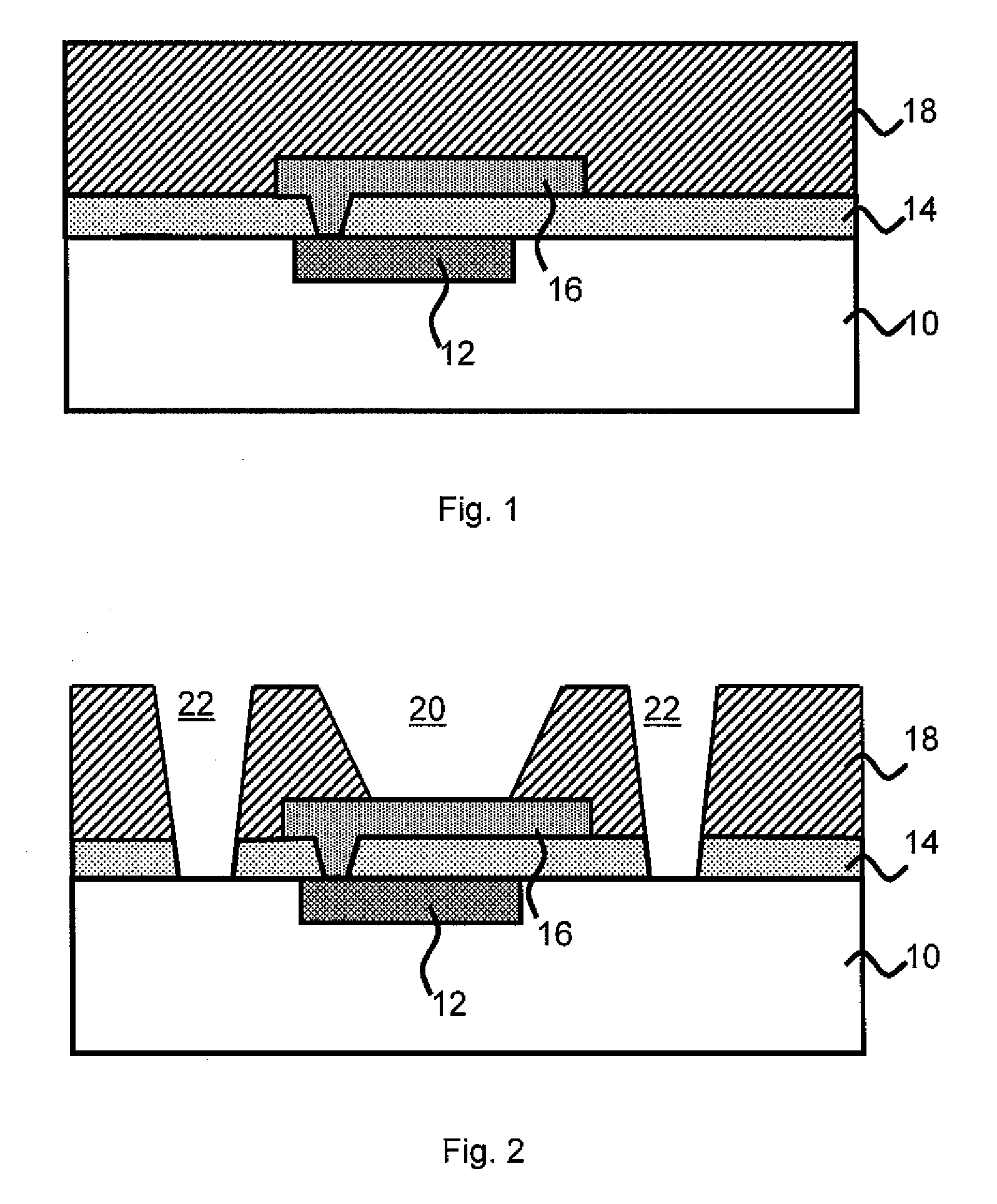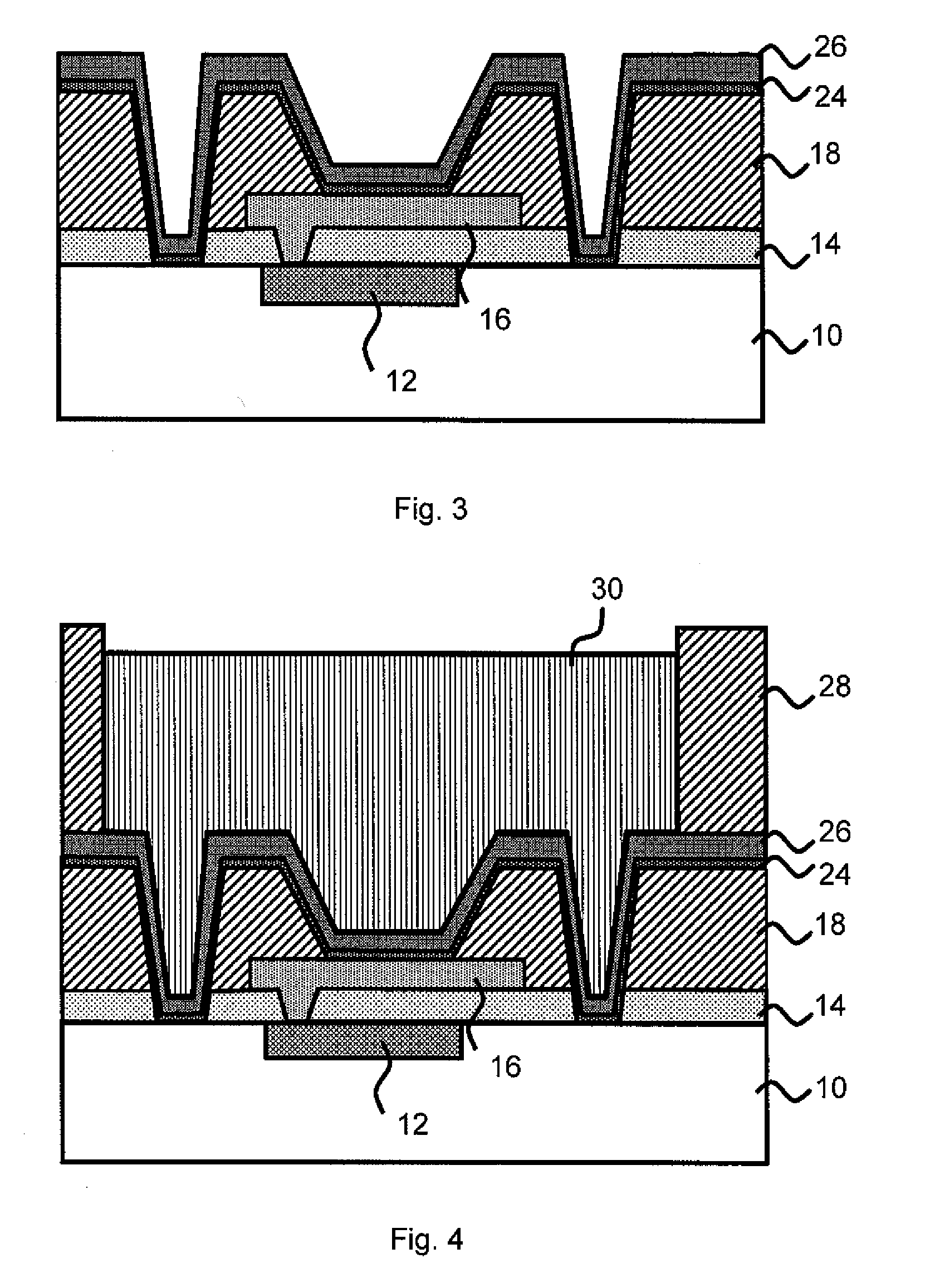Methods of forming solder connections and structure thereof
a technology of solder connection and semiconductor device, which is applied in the direction of semiconductor devices, electrical appliances, basic electric elements, etc., can solve the problems of reducing the potential integrity of bump attachment, affecting device performance and reliability, and causing the disruption of solder connection. to achieve the effect of preventing the disruption of the solder connection
- Summary
- Abstract
- Description
- Claims
- Application Information
AI Technical Summary
Benefits of technology
Problems solved by technology
Method used
Image
Examples
Embodiment Construction
[0014]The invention relates to methods for forming solder connections on a semiconductor device. In embodiments, the methods of the invention reduce, if not entirely eliminates, corrosion or undercut of underlying layers of the solder connection. The present invention further increases surface area contract between the structure and the solder material, while eliminating or substantially reducing the effects of cracking or the propagation of cracks. In this manner, the solder bump prepared by the present method supports an increased device lifetime and performance.
[0015]In embodiments, the invention is a controlled collapse chip connection (C4) structure comprising a plurality of dummy vias adjacent to the well for a solder connection of a C4 structure. The plurality of dummy vias intercept stress related cracks to prevent solder connection disruptions.
[0016]FIG. 1 represents a beginning structure at the back-end-of-line process level. The structure includes a metallization layer 12...
PUM
 Login to View More
Login to View More Abstract
Description
Claims
Application Information
 Login to View More
Login to View More - R&D
- Intellectual Property
- Life Sciences
- Materials
- Tech Scout
- Unparalleled Data Quality
- Higher Quality Content
- 60% Fewer Hallucinations
Browse by: Latest US Patents, China's latest patents, Technical Efficacy Thesaurus, Application Domain, Technology Topic, Popular Technical Reports.
© 2025 PatSnap. All rights reserved.Legal|Privacy policy|Modern Slavery Act Transparency Statement|Sitemap|About US| Contact US: help@patsnap.com



